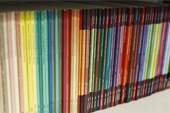
Daily lives and corruption: public opinion in Southern Africa
Berlin, TI, 2011
This site belongs to UNESCO’s International Institute for Educational Planning

Berlin, TI, 2011

Berlin, Transparency International, 2011

Ukraine, Center for Testing Technologies, 2008

Cape Town, Afrobarometer, 2007

Paris, UNESCO, 2007

Brasilia, UNESCO, 2007

Aldershot (England), Ashgate, 2006
Stay informed About Etico
Sign up to the ETICO bulletin to receive the latest updates
Submit your content
Help us grow our library by sharing your content on corruption in education.